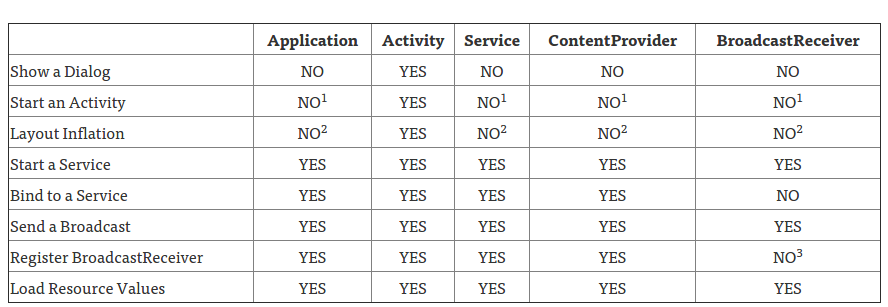I am sporadically getting an OutOfMemoryError: (Heap Size=49187KB, Allocated=41957KB) in one of my apps. What can I do to diagnose this?
01-09 10:32:02.079: E/dalvikvm(8077): Out of memory: Heap Size=49187KB, Allocated=41957KB, Limit=49152KB
01-09 10:32:02.079: E/dalvikvm(8077): Extra info: Footprint=48611KB, Allowed Footprint=49187KB, Trimmed=7852KB
01-09 10:32:02.079: D/skia(8077): --- decoder->decode returned false
01-09 10:32:02.079: D/AndroidRuntime(8077): Shutting down VM
01-09 10:32:02.079: W/dalvikvm(8077): threadid=1: thread exiting with uncaught exception (group=0x40a97228)
01-09 10:32:02.079: E/AndroidRuntime(8077): FATAL EXCEPTION: main
01-09 10:32:02.079: E/AndroidRuntime(8077): java.lang.OutOfMemoryError: (Heap Size=49187KB, Allocated=41957KB)
01-09 10:32:02.079: E/AndroidRuntime(8077): at android.graphics.BitmapFactory.nativeDecodeAsset(Native Method)
01-09 10:32:02.079: E/AndroidRuntime(8077): at android.graphics.BitmapFactory.decodeResourceStream(BitmapFactory.java:486)
01-09 10:32:02.079: E/AndroidRuntime(8077): at android.graphics.drawable.Drawable.createFromResourceStream(Drawable.java:773)
01-09 10:32:02.079: E/AndroidRuntime(8077): at android.content.res.Resources.loadDrawable(Resources.java:2044)
01-09 10:32:02.079: E/AndroidRuntime(8077): at android.content.res.Resources.getDrawable(Resources.java:675)
01-09 10:32:02.079: E/AndroidRuntime(8077): at android.view.View.setBackgroundResource(View.java:11776)
01-09 10:32:02.079: E/AndroidRuntime(8077): at com.blsk.bigtoss.ImageLoader.DisplayImage(ImageLoader.java:81)
01-09 10:32:02.079: E/AndroidRuntime(8077): at com.blsk.bigtoss.MatchActivity$MatchAsyncTask.onPostExecute(MatchActivity.java:1768)
01-09 10:32:02.079: E/AndroidRuntime(8077): at android.os.AsyncTask.finish(AsyncTask.java:602)
01-09 10:32:02.079: E/AndroidRuntime(8077): at android.os.AsyncTask.access$600(AsyncTask.java:156)
01-09 10:32:02.079: E/AndroidRuntime(8077): at android.os.AsyncTask$InternalHandler.handleMessage(AsyncTask.java:615)
01-09 10:32:02.079: E/AndroidRuntime(8077): at android.os.Handler.dispatchMessage(Handler.java:99)
01-09 10:32:02.079: E/AndroidRuntime(8077): at android.os.Looper.loop(Looper.java:156)
01-09 10:32:02.079: E/AndroidRuntime(8077): at android.app.ActivityThread.main(ActivityThread.java:4987)
01-09 10:32:02.079: E/AndroidRuntime(8077): at java.lang.reflect.Method.invokeNative(Native Method)
01-09 10:32:02.079: E/AndroidRuntime(8077): at java.lang.reflect.Method.invoke(Method.java:511)
01-09 10:32:02.079: E/AndroidRuntime(8077): at com.android.internal.os.ZygoteInit$MethodAndArgsCaller.run(ZygoteInit.java:784)
01-09 10:32:02.079: E/AndroidRuntime(8077): at com.android.internal.os.ZygoteInit.main(ZygoteInit.java:551)
01-09 10:32:02.079: E/AndroidRuntime(8077): at dalvik.system.NativeStart.main(Native Method)
01-09 10:32:02.099: E/EmbeddedLogger(1612): App crashed! Process: com.blsk.bigtoss
01-09 10:32:02.099: E/EmbeddedLogger(1612): App crashed! Package: com.blsk.bigtoss v6 (1.2)
01-09 10:32:02.129: E/EmbeddedLogger(1612): Application Label: Cricket
This is the line where it is happening:
LinearLayout resultMatchHeaderContainer = new LinearLayout(activity);
if (!resultImagePath.equals("")) {
imageLoader.DisplayImage(resultImagePath,resultMatchHeaderContainer, -1,modifiedHeight, R.drawable.matches_placeholder_result2x);
} else {
try {
resultMatchHeaderContainer.setBackgroundResource(R.drawable.matches_placeholder_result2x);
} catch (OutOfMemoryError e) {
e.printStackTrace();
}
}

